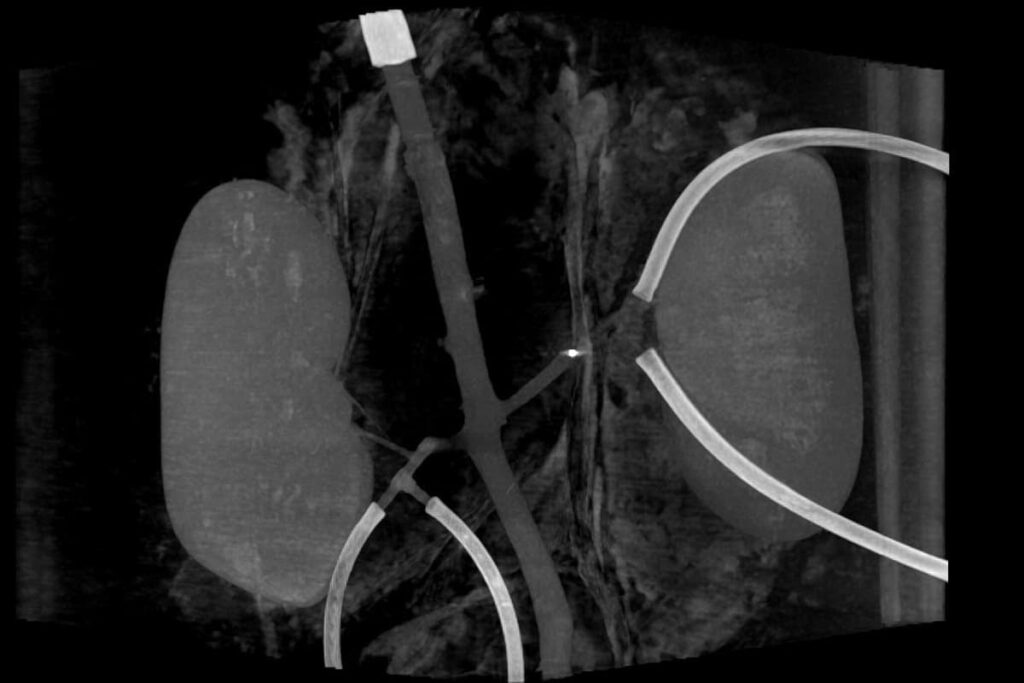By Ben Coxworth

n this X-ray image, one of the millirobots (bright spot at center right) can be seen making its way through a blood vessel connecting two kidneys and an aorta
University of Twente
While some blood clots can be removed via a flexible tool that’s inserted into the affected vein or artery, others are much more difficult to reach. Those other clots could one day be treated using remote-control “millirobots” that auger their way through the patient’s blood vessels.
Currently in experimental form, the tiny devices were created by scientists from the Netherlands’ University of Twente and Radboud University Medical Center. Each bot’s 3D-printed corkscrew-shaped body is about the size of a grain of rice, and contains a 1 x 1-mm permanent magnet.
The idea is that one or more millirobots could be inserted into the affected blood vessel via a cannula, then remotely steered through that vessel until it reached the clot, which it would break apart by drilling into.
An external rotating magnet is utilized to move the bots. As that magnet rotates, it causes the millirobot’s magnetized body to rotate along its longitudinal axis, allowing it to “swim” through the blood in the vessel (even against the direction of blood flow) up to the clot.
Once the clot has been broken apart, the external magnet reverses the direction in which it rotates. This causes the millirobot to likewise reverse its direction of rotation, so that it swims back down the blood vessel to the cannula site. It can then be removed from the vessel.
A rendering of one of the millirobots
A rendering of one of the millirobotsUniversity of Twente
In lab experiments, a rotating magnet on a robotic arm was used to guide multiple millirobots – both up and downstream – through blood vessels connecting an extracted pig aorta and kidneys. Although the maximum blood flow was 120 ml (4 oz) per minute, it is believed that the robots could overcome a greater flow if a stronger external magnet were to be used.
And the possible applications don’t stop at blood clot treatment.
“The robots can deliver drugs to very specific places in the body where the drug is needed the most,” said the lead scientist, U Twente’s Asst. Prof. Islam Khalil. “That way we have minimal side effects in the rest of the body.”
The lab setup utilized in the studyUniversity of Twente
The technology is being developed further via a partnership between Radboud University Medical Center and Triticum Medical.
You can see some of the millirobots in action, in the video below.
Blood-clot-busting millirobots
Source: University of Twente

Leave a Reply